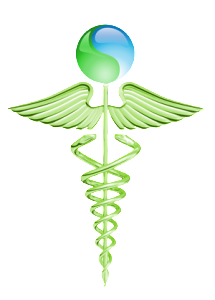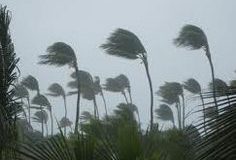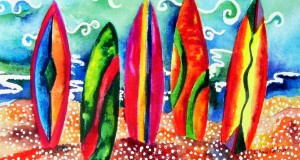
There are essentially 4 types of Cold water fish commonly found in aquariums. There are listed below together with their tips of care.
Gold Fish
Tips 1: Ideal temperature 18-24 °C (64-75 °F)
Tips 2: 60 Gallons tank for 3 fancy goldfish or 2 common or 2 comet goldfish. 2.5cm (1 in) of fish per 60 sq cm (9.3 sq in) of tank water surface area is the bare minimum. Remember we must base the calculations on the adult size of the fish.
Tips 3: A full-sized canister or hang-on filter
Tips 4: Use Air stone
Tips 5: Weekly water changes of 30-50%
Tips 6: No dangerous items in aquarium (decorations or rocks)
Tips 7: No Plecosotomus
The goldfish is the most common type of Coldwater species kept. It can live in an unheated aquarium. As they are of the carp family, goldfish produce a large amount of waste both in their feces and through their gills, releasing harmful chemicals into the water. This is because goldfish like other cyprinids, is without a stomach and only have an intestinal tract, and thus cannot digest an excess of proteins. Build-up of this waste to toxic levels can occur in a relatively short period of time, which is often the cause of a fish’s sudden death. Temperatures under about 10 °C (50 °F) are dangerous to goldfish. Conversely, temperatures over 25 °C (77 °F) can be extremely damaging for goldfish. Their tanks need extensive filtration. The best style of filter for a goldfish tank is a full-sized canister or hang-on filter Aeration is very important since goldfish have very high oxygen requirements, thus air stone or other means should be used. Regular water changes are necessary for a healthy aquarium. Most goldfish tanks require a weekly water change of about 30 – 50% to keep the aquarium in proper working order. Large, smooth gravel is most preferred since goldfish will sift through the gravel all day long and you don’t want them to swallow rocks or cutting their mouths. Live plants aren’t usually kept with goldfish because they absolutely love to munch on them. Delicate goldfish such as Bubble-Eyes or Telescope-Eyes should not be kept in an aquarium with sharp rocks. There shouldn’t be any decorations with holes or caves smaller than the goldfish can swim through without scraping their sides and/or stomachs. Never keep Plecostomus with gold fish, as they love for the thick slime coating on a goldfish’s body. Many goldfish dies from the Pleco’s assault.
White cloud
Tips 1: Ideal Temperature 18-24 °C (64-75 °F)
Tips 2: 2 feet tank for 20 white clouds (maximum of 35).
Tips 3: Keep in a group of more than 6.
Tips 4: 20% weekly water changes
The White clouds stays small (4cm) is ideal to keep in smaller aquariums. They have a wide temperature tolerance and can survive water temperatures as low as 5°C (41°F). But the ideal water temperature will be 18-24 °C (64-75 °F). They need a well planted tank with open space to swim. They are schooling fish and should be kept in groups of 6 or more. They are very peaceful and can be housed with other type of community fish (Dianos) that shares the same water condition. Good filtration with gentle current is needed for them to stay happy.
Koi
Tips 1: Ideal Temperature 18-24 °C (64-75 °F)
Tips 2: 1200 gallon pond with 12 full size koi
Tips 3: Good Mechanical Filtration
Tips 4: More than 10% water changes weekly
A Koi pond needs to provide clean, well oxygenated water in order to produce a healthy environment for fish to live and grow. The basic requirements are: To be large enough to accommodate the potential size that Koi can grow to (24 inches / 60cm plus). A pond of around 8 feet x 6 feet and 4 feet deep (2.5m x 2m x 1.2m) containing approx’ 1200 gallons (5500L) would be a sensible minimum for keeping Koi in the temperate climates. Koi produce large amounts of solid waste, so your ponds’ filter system must have good mechanical filtration to remove solids from the water. The mechanical filter can be in the form of nylon brushes, plastic media or a vortex that slowly spins the water and allows larger, heavier particles to settle out. The mechanical filter must be easy to clean and if it is fed from a bottom drain must have a valve to shut it off from the pond for regular cleaning. It is recommended to clean this section on at least a weekly basis. Even with the best filter systems, frequent water changes are essential to keep your fish in good health and obtain maximum growth. 10% a week is a good minimum to aim at, in an averagely stocked pond. Your biological filter will break down Ammonia but there are many others by products of the fishes’ metabolism that will gradually build up unless water changes are carried out.
Diano
Tips 1: Ideal Temperature 18-24 °C (64-75 °F)
Tips 2: 2 feet tank for 20 Dianos (Maximum 30)
Tips 3: Keep in a group of more than 6.
Tips 4: 20% weekly water changes
Basically, the care for Diano is almost similar to the white clouds. The only difference here is that Diano are slightly larger than white cloud. Diano can grow to 5cm while White cloud typically max out at 4cm. Dianos and White clouds can be kept together and they will school together in groups.

Source by Jincheng Ong
 Vitamin Agent The Health & Naturalistic Source
Vitamin Agent The Health & Naturalistic Source





